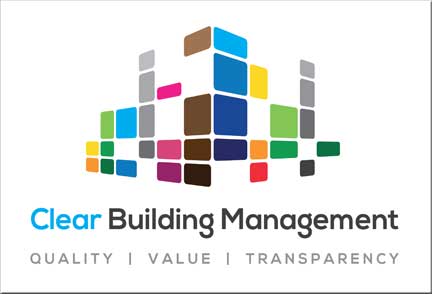
“Snakes and cladders” is Private Eye’s headline revealing Vuillard Holdings Limited as the latest landlord with Grenfell cladding on site.
Owned by shy proprietors David and Patrick Kennedy, it owns the freehold of Victoria Wharf, two sites Limehouse in East London, where leaseholders have so far “been forced” to pay £165,000 for fire wardens. LKP is unaware of there having been a tribunal hearing, however.
No sign that the Kennedys are going to do the “decent thing” that ministers urge and stump up to pay to remove the cladding, which is likely to be a few million, the Eye suggests.
Victoria Wharf joins Heysmoor Heights in Liverpool in having an offshore landlord; the latter has Abacus Land 4 Limited in Guernsey, which is managed by Will Astor’s Long Harbour ground rent fund.
The Grenfell cladding issue demolishes the argument of the sector that only commercial freeholders can be entrusted with the long term interest of a block of flats.
This explains the repeated attempts by the Leasehold Advisory Service, ARMA, assorted toadying law firms et all to discredit leaseholder managed sites and serve the commercialising interests in the leasehold sector.

If leaseholders have control of apartment blocks, runs the argument, they would simply reduce service charges and the sites would deteriorate.
This nonsense is repeated ad nauseam without a shred of evidence.
Leaving aside the fact that the rest of the world, including not too distant Scotland, seems to manage alright where flat owners are in charge, the evidence does not really stack up.
Last month LKP organised c50 RTM directors to attend the Law Commission consultation on right to manage. They included directors of RTM and RMCs who are responsible for London blocks of flats worth hundreds of millions of pounds.
In addition, several were rather senior lawyers to those assisting the Law Commission with its right to manage review.
The idea that they would trash the asset of which they are the principal shareholders is risible – commercial freeholds can be worth just 3% of a block of flats compared with the value of the leases (yet can make all the decisions and hoover up the commissions).
And it really does not matter to the landlord what the state of the building is: the revenues are unaffected.
So far, the roll call of honour for developers and freeholders who have “done the decent thing”, as ministers urge, and paid up for the cladding is rather brief.
There is the freeholder Legal and General at Resolution / Blenheim Centre stomping up £12 in fire marshal and cladding costs, following prompting by LKP.
Legal and General is an unusual residential freeholder in that it has a reputation worth something. (It also owned the Blenheim Centre shopping centre below the flats, so was in for a big bill in any case.)
Barratt is going to pay up at Citiscape, in Croydon, which it built in 2002. The freeholder is Vincent Tchenguiz and his so called Tchenguiz Family Trust in the British Virgin Islands.
Barratt is paying up for reputational reasons, only has one cladding site and is perhaps seeking brownie points with government – some planning consents? – elsewhere. Nonetheless, well done.
Praise for Barratt’s – and LKP – from Citiscape leaseholders
(No one anticipated any contribution from the Tchenguiz interests.)
The NHBC warranty provider, not an organisation without its critics, is stumping up at Galliard’s New Capital Quay in Greenwich. This followed some tiresome brinkmanship between the two residential property insiders, with every likelihood that the bill would be dumped on the leaseholders.
LKP played its part in ensuring that this scandal kept in the headlines and in excellent consumer broadcast shows such as BBC R4’s You and Yours.
NHBC accepts Grenfell cladding bill at Galliard’s New Capital Quay
The developer Mace has agreed to cover the full costs of re-cladding a £225m London scheme at two blocks at its Greenwich Square Project in south-east London.
Mace pays re-cladding bill on £225m London scheme
The company confirmed in a meeting with residents last week it would foot the bill to re-clad two blocks at its Greenwich Square Project in south-east London. Residents were told by the company that the firm had decided to cover the cost so the cladding would be removed as soon as possible.
The much reviled Taylor Wimpey – because of ripping off its customers with leasehold houses and doubling ground rents – is paying out at Glasgow Harbour.
In Scotland, of course, there is no parasitical freeholder – sorry, responsible landlord – and the issue was therefore an uncomplicated dispute between the builder that put the cladding on and its customers. Taylor Wimpey decided to pony up.
Er … and that’s it.
There is the curious case of Nova House in Slough, where the council bought the freehold for £1 from ground rent speculator Robert Steinhouse.
The council now has to put the squeeze on the leaseholders to pay for the fire marshals and cladding removal, or explain to its electors why it isn’t.
Slough council takes Nova House leaseholders to tribunal over Grenfell cladding costs






 Retirement sector thought it would prompt leasehold reform, but leasehold houses and double ground rents were even worse …
Retirement sector thought it would prompt leasehold reform, but leasehold houses and double ground rents were even worse …






















Are Taylor Wimpey in breach of The Building (Scotland) Regulations 2004 which came into force on 1 May 2005.?
These post devolved regulations, meant that all cladding that was used in high-rise dwellings had to be non-combustible.
As I have stated before, no local authority or housing association high-rises in Scotland has been found to be using the flammable cladding.
However, here we have a private block built by Taylor Wimpey that has. Shurely shome mistake?
If so, why no prosecutions of building regulation breaches and who signed it off as safe?
First photograph is of Goodhart Place. Originally developed by Hunting Gate and completed by St George.